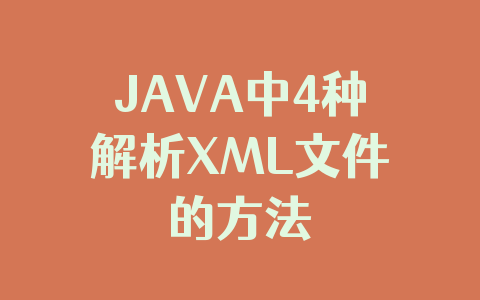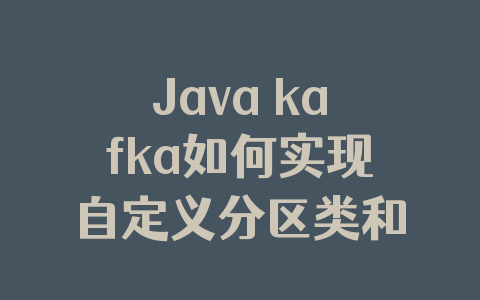本文实例为大家分享了java实现Excel导入导出的具体代码,供大家参考,具体内容如下
一.Excel读写技术
区别:
二.jxl读写基础代码
1.从数据库将数据导出到excel表格
public class JxlExcel {
public static void main(String[] args) {
//创建Excel文件
String[] title= {\"姓名\",\"课程名\",\"分数\"};
File file=new File(\"f:/sheet1.xls\");
try {
file.createNewFile();
//创建工作簿
WritableWorkbook workbook=Workbook.createWorkbook(file);
//创建Sheet
WritableSheet sheet=workbook.createSheet(\"表格一\", 20);
//第一行设置列名
Label label=null;
for (int i = 0; i < title.length; i++) {
label=new Label(i, 0, title[i]);//第一个参数为列,第二个为行
sheet.addCell(label);
}
Data data=new Data();
ResultSet rs=data.getString();
while(rs.next()) {
System.out.println(rs.getString(1));
label=new Label(0,rs.getRow(),rs.getString(1));
sheet.addCell(label);
label=new Label(1,rs.getRow(),rs.getString(2));
sheet.addCell(label);
label=new Label(2,rs.getRow(),rs.getString(3));
sheet.addCell(label);
}
workbook.write();
workbook.close();
} catch (Exception e) {
// TODO Auto-generated catch block
e.printStackTrace();
}
}
}
2.从Excel表格中读取数据
public class JxlRead {
public static void main(String[] args) {
//创建workbook
try {
Workbook workbook=Workbook.getWorkbook(new File(\"f:/sheet1.xls\"));
//获取第一个表格
Sheet sheet=workbook.getSheet(0);
//获取数据
for (int i = 0; i < sheet.getRows(); i++) {
for (int j = 0; j < sheet.getColumns(); j++) {
Cell cell=sheet.getCell(j, i);
System.out.print(cell.getContents()+\" \");
}
System.out.println();
}
} catch (Exception e) {
// TODO Auto-generated catch block
e.printStackTrace();
}
}
}
三.Poi读写基础代码
//所需jar包:commons-io-2.2.jar;poi-3.11-20141221.jar
//通过poi进行excel导入数据
public class PoiExcel {
public static void main(String[] args) throws SQLException {
String title[]= {\"名字\",\"课程\",\"分数\"};
//1.创建Excel工作簿
HSSFWorkbook workbook=new HSSFWorkbook();
//2.创建一个工作表
HSSFSheet sheet=workbook.createSheet(\"sheet2\");
//3.创建第一行
HSSFRow row=sheet.createRow(0);
HSSFCell cell=null;
//4.插入第一行数据
for (int i = 0; i < title.length; i++) {
cell=row.createCell(i);
cell.setCellValue(title[i]);
}
//5.追加数据
Data data=new Data();
ResultSet rs=data.getString();
while(rs.next()) {
HSSFRow row2=sheet.createRow(rs.getRow());
HSSFCell cell2=row2.createCell(0);
cell2.setCellValue(rs.getString(1));
cell2=row2.createCell(1);
cell2.setCellValue(rs.getString(2));
cell2=row2.createCell(2);
cell2.setCellValue(rs.getString(3));
}
//创建一个文件,将Excel内容存盘
File file=new File(\"e:/sheet2.xls\");
try {
file.createNewFile();
FileOutputStream stream=FileUtils.openOutputStream(file);
workbook.write(stream);
stream.close();
} catch (IOException e) {
// TODO Auto-generated catch block
e.printStackTrace();
}
}
}
//将Excel表中内容读取
public class PoiRead {
public static void main(String[] args) {
//需要解析的Excel文件
File file=new File(\"e:/sheet2.xls\");
try {
//获取工作簿
FileInputStream fs=FileUtils.openInputStream(file);
HSSFWorkbook workbook=new HSSFWorkbook(fs);
//获取第一个工作表
HSSFSheet hs=workbook.getSheetAt(0);
//获取Sheet的第一个行号和最后一个行号
int last=hs.getLastRowNum();
int first=hs.getFirstRowNum();
//遍历获取单元格里的信息
for (int i = first; i <last; i++) {
HSSFRow row=hs.getRow(i);
int firstCellNum=row.getFirstCellNum();//获取所在行的第一个行号
int lastCellNum=row.getLastCellNum();//获取所在行的最后一个行号
for (int j = firstCellNum; j <lastCellNum; j++) {
HSSFCell cell=row.getCell(j);
String value=cell.getStringCellValue();
System.out.print(value+\" \");
}
System.out.println();
}
} catch (IOException e) {
// TODO Auto-generated catch block
e.printStackTrace();
}
}
}
如果Excel版本过高则需要改写用XSSF
public class PoiExpExcel2 {
/**
* POI生成Excel文件
* @author David
* @param args
*/
public static void main(String[] args) {
String[] title = {\"id\",\"name\",\"sex\"};
//创建Excel工作簿
XSSFWorkbook workbook = new XSSFWorkbook();
//创建一个工作表sheet
Sheet sheet = workbook.createSheet();
//创建第一行
Row row = sheet.createRow(0);
Cell cell = null;
//插入第一行数据 id,name,sex
for (int i = 0; i < title.length; i++) {
cell = row.createCell(i);
cell.setCellValue(title[i]);
}
//追加数据
for (int i = 1; i <= 10; i++) {
Row nextrow = sheet.createRow(i);
Cell cell2 = nextrow.createCell(0);
cell2.setCellValue(\"a\" + i);
cell2 = nextrow.createCell(1);
cell2.setCellValue(\"user\" + i);
cell2 = nextrow.createCell(2);
cell2.setCellValue(\"男\");
}
//创建一个文件
File file = new File(\"e:/poi_test.xlsx\");
try {
file.createNewFile();
//将Excel内容存盘
FileOutputStream stream = FileUtils.openOutputStream(file);
workbook.write(stream);
stream.close();
} catch (IOException e) {
e.printStackTrace();
}
}
}
四.定制导入模板
1.首先准备好模板的.xml文件,然后导入所需的jar包
例子:student.xml文件
<?xml version=\"1.0\" encoding=\"UTF-8\"?> <excel id=\"student\" code=\"student\" name=\"学生信息导入\"> <colgroup> <col index=\"A\" width=\'17em\'></col> <col index=\"B\" width=\'17em\'></col> <col index=\"C\" width=\'17em\'></col> <col index=\"D\" width=\'17em\'></col> <col index=\"E\" width=\'17em\'></col> <col index=\"F\" width=\'17em\'></col> </colgroup> <title> <tr height=\"16px\"> <td rowspan=\"1\" colspan=\"6\" value=\"学生信息导入\" /> </tr> </title> <thead> <tr height=\"16px\"> <th value=\"编号\" /> <th value=\"姓名\" /> <th value=\"年龄\" /> <th value=\"性别\" /> <th value=\"出生日期\" /> <th value=\" 爱好\" /> </tr> </thead> <tbody> <tr height=\"16px\" firstrow=\"2\" firstcol=\"0\" repeat=\"5\"> <td type=\"string\" isnullable=\"false\" maxlength=\"30\" /><!--用户编号 --> <td type=\"string\" isnullable=\"false\" maxlength=\"50\" /><!--姓名 --> <td type=\"numeric\" format=\"##0\" isnullable=\"false\" /><!--年龄 --> <td type=\"enum\" format=\"男,女\" isnullable=\"true\" /><!--性别 --> <td type=\"date\" isnullable=\"false\" maxlength=\"30\" /><!--出生日期 --> <td type=\"enum\" format=\"足球,篮球,乒乓球\" isnullable=\"true\" /><!--爱好 --> </tr> </tbody> </excel>
所需jar包:
commons-lang3-3.1.jar
jdom.jar
poi-3.11-20141221.jar
commons-io-2.2.jar
java代码:
//准备工作:导入相关jar包commons-lang3-3.1.jar,jdom.jar,poi-3.11-20141221.jar
public class CreateTemp {
public static void main(String[] args) {
//获取解析Xml路径
String path=System.getProperty(\"user.dir\")+\"/student.xml\";
File file=new File(path);
SAXBuilder builder=new SAXBuilder();
//解析xml文件
try {
Document document=builder.build(file);
//创建Excel
HSSFWorkbook workbook=new HSSFWorkbook();
//创建表格
HSSFSheet sheet=workbook.createSheet(\"sheet0\");
//获取Xml文件的根节点
Element root=document.getRootElement();
//获取模板名称
String tempName=root.getAttributeValue(\"name\");
//设置列宽
Element colgroup=root.getChild(\"colgroup\");
setColumnWidth(sheet,colgroup);
//设置标题
int rownum = 0;
int column = 0;
Element title=root.getChild(\"title\");
List<Element> trs=title.getChildren(\"tr\");
for (int i = 0; i <trs.size(); i++) {
Element tr=trs.get(i);
List<Element> tds=tr.getChildren(\"td\");
HSSFRow row=sheet.createRow(rownum);
HSSFCellStyle cellStyle=workbook.createCellStyle();//创建单元格格式
cellStyle.setAlignment(HSSFCellStyle.ALIGN_CENTER);//标题居中
for (int j = 0; j < tds.size(); j++) {
Element td=tds.get(j);
HSSFCell cell=row.createCell(j);
Attribute rowspan=td.getAttribute(\"rowspan\");
Attribute colspan=td.getAttribute(\"colspan\");
Attribute value=td.getAttribute(\"value\");
if (value!=null) {
String content=value.getValue();
cell.setCellValue(content);
int rspan=rowspan.getIntValue()-1;
int cspan=colspan.getIntValue()-1;
//设置字体
HSSFFont font=workbook.createFont();
font.setFontName(\"仿宋_GB2312\");
font.setBoldweight(HSSFFont.BOLDWEIGHT_BOLD);//字体加粗
// font.setFontHeight((short)12);
font.setFontHeightInPoints((short)12);
cellStyle.setFont(font);
cell.setCellStyle(cellStyle);
//合并单元格居中
sheet.addMergedRegion(new CellRangeAddress(rspan, rspan, 0, cspan));
}
}
rownum++;
}
//设置表头
Element thead=root.getChild(\"thead\");
trs=thead.getChildren(\"tr\");
for (int i = 0; i < trs.size(); i++) {
Element tr=trs.get(i);
HSSFRow row=sheet.createRow(rownum);
List<Element> ths=tr.getChildren(\"th\");
for (int j = 0; j <ths.size(); j++) {
Element th=ths.get(j);
HSSFCell cell=row.createCell(j);
Attribute value=th.getAttribute(\"value\");
if (value!=null) {
String content=value.getValue();
cell.setCellValue(content);
}
}
rownum++;
}
//设置数据区域样式
Element tbody = root.getChild(\"tbody\");
Element tr=tbody.getChild(\"tr\");
int repeat=tr.getAttribute(\"repeat\").getIntValue();
List<Element> tds=tr.getChildren(\"td\");
for (int i = 0; i < repeat; i++) {
HSSFRow row=sheet.createRow(rownum);
for (int j = 0; j < tds.size(); j++) {
Element td=tds.get(j);
HSSFCell cell=row.createCell(j);
setType(workbook,cell,td);
}
}
rownum++;
//生成Excel导入模板
File tempFile=new File(\"e:/\"+tempName+\".xls\");
tempFile.delete();
tempFile.createNewFile();
FileOutputStream fos=FileUtils.openOutputStream(tempFile);
workbook.write(fos);
fos.close();
} catch (Exception e) {
// TODO Auto-generated catch block
e.printStackTrace();
}
}
private static void setType(HSSFWorkbook workbook, HSSFCell cell, Element td) {
Attribute typeAttr = td.getAttribute(\"type\");
String type = typeAttr.getValue();
HSSFDataFormat format = workbook.createDataFormat();
HSSFCellStyle cellStyle = workbook.createCellStyle();
if(\"NUMERIC\".equalsIgnoreCase(type)){
cell.setCellType(HSSFCell.CELL_TYPE_NUMERIC);
Attribute formatAttr = td.getAttribute(\"format\");
String formatValue = formatAttr.getValue();
formatValue = StringUtils.isNotBlank(formatValue)? formatValue : \"#,##0.00\";
cellStyle.setDataFormat(format.getFormat(formatValue));
}else if(\"STRING\".equalsIgnoreCase(type)){
cell.setCellValue(\"\");
cell.setCellType(HSSFCell.CELL_TYPE_STRING);
cellStyle.setDataFormat(format.getFormat(\"@\"));
}else if(\"DATE\".equalsIgnoreCase(type)){
cell.setCellType(HSSFCell.CELL_TYPE_NUMERIC);
cellStyle.setDataFormat(format.getFormat(\"yyyy-m-d\"));
}else if(\"ENUM\".equalsIgnoreCase(type)){
CellRangeAddressList regions =
new CellRangeAddressList(cell.getRowIndex(), cell.getRowIndex(),
cell.getColumnIndex(), cell.getColumnIndex());
Attribute enumAttr = td.getAttribute(\"format\");
String enumValue = enumAttr.getValue();
//加载下拉列表内容
DVConstraint constraint =
DVConstraint.createExplicitListConstraint(enumValue.split(\",\"));
//数据有效性对象
HSSFDataValidation dataValidation = new HSSFDataValidation(regions, constraint);
workbook.getSheetAt(0).addValidationData(dataValidation);
}
cell.setCellStyle(cellStyle);
}
private static void setColumnWidth(HSSFSheet sheet, Element colgroup) {
List<Element> cols=colgroup.getChildren(\"col\");//获取col的节点
for (int i = 0; i < cols.size(); i++) {
Element col=cols.get(i);
Attribute width=col.getAttribute(\"width\");//获取每列中的width属性
String unit = width.getValue().replaceAll(\"[0-9,\\\\.]\", \"\");//单位
String value = width.getValue().replaceAll(unit, \"\");//数值
int v=0;
if(StringUtils.isBlank(unit) || \"px\".endsWith(unit)){
v = Math.round(Float.parseFloat(value) * 37F);
}else if (\"em\".endsWith(unit)){
v = Math.round(Float.parseFloat(value) * 267.5F);
}//对单位进行判断
sheet.setColumnWidth(i, v);
}
}
}
以上就是本文的全部内容,希望对大家的学习有所帮助,也希望大家多多支持自学编程网。














